Eco‑Luxury Romantic Getaways: Top Sustainable Destinations
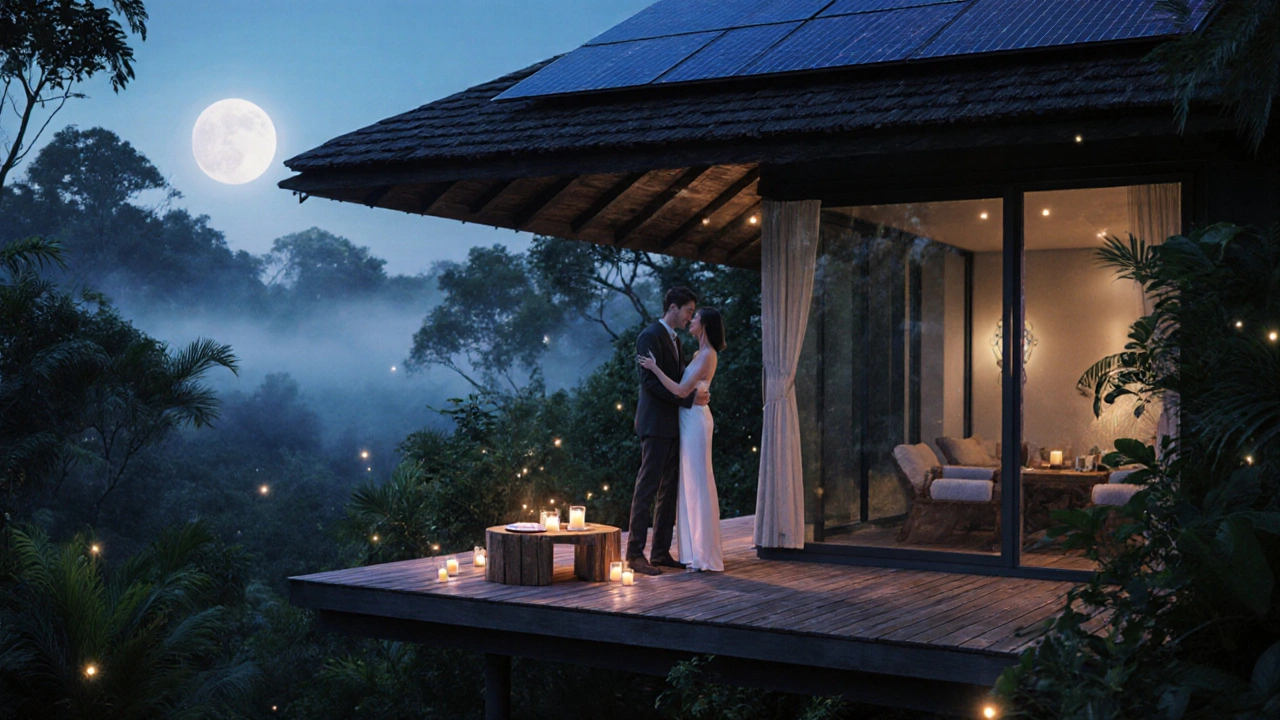
When love meets responsibility, the result is an eco‑luxury escape that feels indulgent without leaving a heavy footprint. This guide shows how you can plan a romantic retreat that pampers both you and the planet, featuring five hand‑picked destinations, a quick sustainability checklist, and insider tips for a seamless experience.
What Makes an Eco‑Luxury Romantic Getaway?
Eco‑Luxury Romantic Getaway is a type of travel experience that blends high‑end amenities with verified environmental practices. Think private villas powered by solar panels, spa treatments using locally sourced botanicals, and gourmet meals that come straight from on‑site farms. The idea is simple: enjoy the romance of a five‑star stay while supporting conservation, reducing waste, and boosting local economies.
Top Sustainable Destinations for Couples
Each destination below has earned at least one recognized green certification and offers unique romantic touches-think sunrise hikes, candle‑lit dinners under the stars, and private hot‑springs.
| Destination | Country | Eco Certification | Romantic Highlights | Average Nightly Rate (USD) |
|---|---|---|---|---|
| Nayara Springs | Costa Rica | LEED Gold | Private plunge pools, rainforest walks | 850 |
| Bambu Indah | Indonesia (Bali) | Biodiversity Certification | Ubud rice‑field villas, sunrise yoga | 480 |
| Ion Adventure Hotel | Iceland | Green Key | Geothermal pools, Northern Lights tours | 620 |
| Matakauri Lodge | New Zealand | Carbon Neutral | Milford Sound views, private boat trips | 720 |
| Princesa dos Verdes Boutique Hotel | Portugal (Azores) | Sustainable Tourism Certification | Thermal baths, volcanic garden walks | 540 |
Why These Destinations Stand Out
- Costa Rica (Nayara Springs) - The country’s 100‑percent renewable electricity grid powers the resort, and a partnership with local NGOs funds rainforest reforestation.
- Bali (Bambu Indah) - Recycled teak structures showcase biophilic design, blending indoor comfort with lush outdoor scenery.
- Iceland (Ion Adventure Hotel) - Harnesses geothermal energy for heating, and its glass‑facade rooms maximize natural daylight, reducing artificial lighting.
- New Zealand (Matakauri Lodge) - Operates a carbon‑offset program that plants native trees for each night booked.
- Azores (Princesa dos Verdes) - Uses rainwater harvesting and serves a farm‑to‑table dining menu sourced from the island’s organic farms.
Planning Checklist: Sustainable Romance Made Easy
- Pick a destination that aligns with both your romance style (beach, mountain, urban) and its sustainability credentials.
- Verify certifications: look for LEED, Green Key, Carbon Neutral, or national eco‑label programs.
- Choose travel modes that reduce emissions - direct flights, train journeys, or carbon‑offset flights.
- Book rooms that feature renewable energy, water‑saving fixtures, and waste‑reduction programs.
- Plan activities that support local culture - guided nature walks, community workshops, or volunteer experiences.
- Pack light, reusable items: water bottles, cloth napkins, and biodegradable toiletries.
Key Sustainability Features to Look For
Not every “green” label means the same thing. Below are the most reliable signs of a truly eco‑luxurious stay.
- Energy source - Solar, wind, or geothermal power, and participation in a renewable‑energy grid.
- Water management - Low‑flow showers, rainwater collection, grey‑water recycling.
- Food sourcing - farm‑to‑table dining, organic produce, and minimal meat menus.
- Material reuse - Reclaimed wood, recycled fabrics, and furnishings built to last.
- Community impact - Partnerships with local NGOs, fair‑wage employment, and cultural preservation programs.
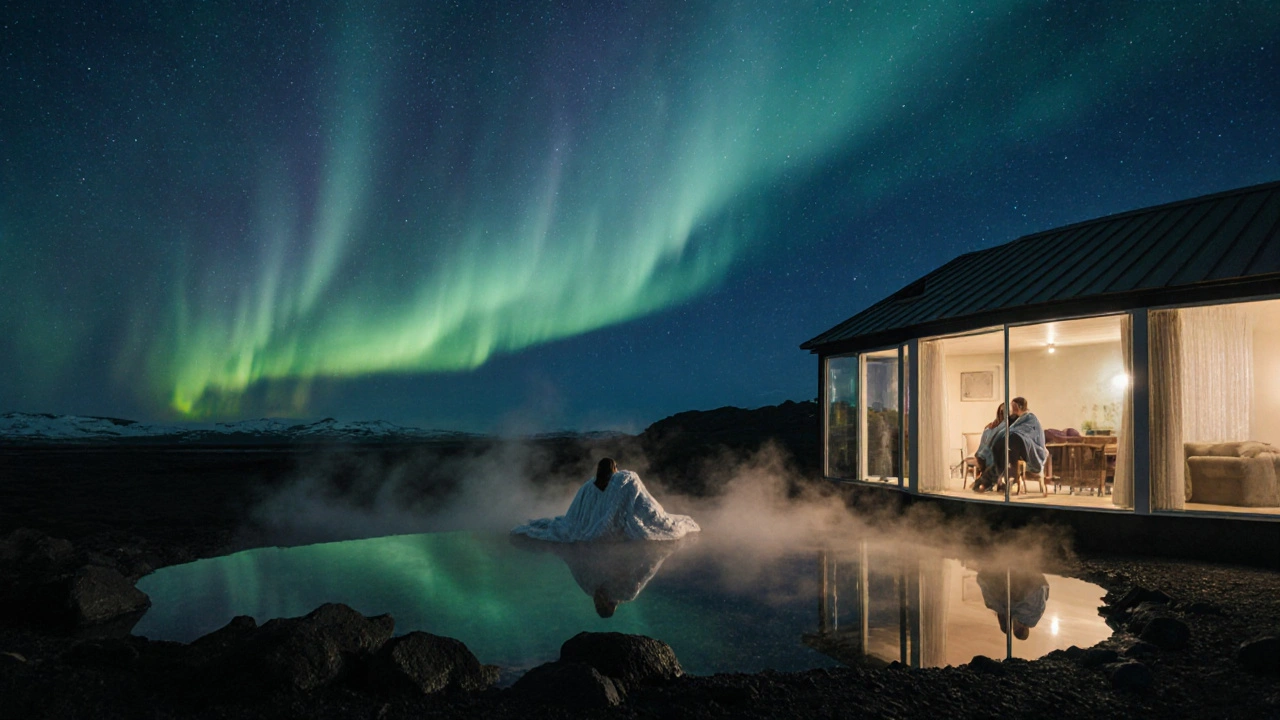
Budgeting for an Eco‑Luxury Escape
Luxury and sustainability can seem pricey, but smart planning keeps costs in check.
- Travel during shoulder seasons (late spring or early fall) to snag lower rates while still enjoying pleasant weather.
- Look for packages that bundle excursions, meals, and spa treatments - these often include greener, group‑sourced experiences.
- Use credit cards that award carbon‑offset points or partner with airlines offering “green miles.”
- Consider a longer stay; many resorts provide a reduced nightly rate after a certain number of nights, spreading the environmental impact over more days.
Real‑World Example: A 4‑Night Stay at Nayara Springs
John and Maya wanted a honeymoon that honored their love for nature. They booked a private villa at Nayara Springs, paid $3,200 for four nights, and opted for the resort’s “Zero‑Waste” package. The package included a private guided rainforest tour, a dinner prepared with ingredients from the on‑site organic garden, and a night‑time stargazing session powered by solar‑charged telescopes. Their carbon footprint was reduced by 45 % compared to a standard luxury resort, and they left with a donation receipt for the rainforest replanting program.
Next Steps: Turn Your Dream into Reality
Pick your favorite destination from the table, check the resort’s latest sustainability report, and lock in your dates. Remember, the most memorable romance stories are the ones that respect the world they happen in.
How can I verify a resort’s eco‑certification?
Visit the certification body’s website (e.g., US Green Building Council for LEED) and search the resort’s name. Most reputable hotels also display the badge on their official site and provide a PDF report on their sustainability practices.
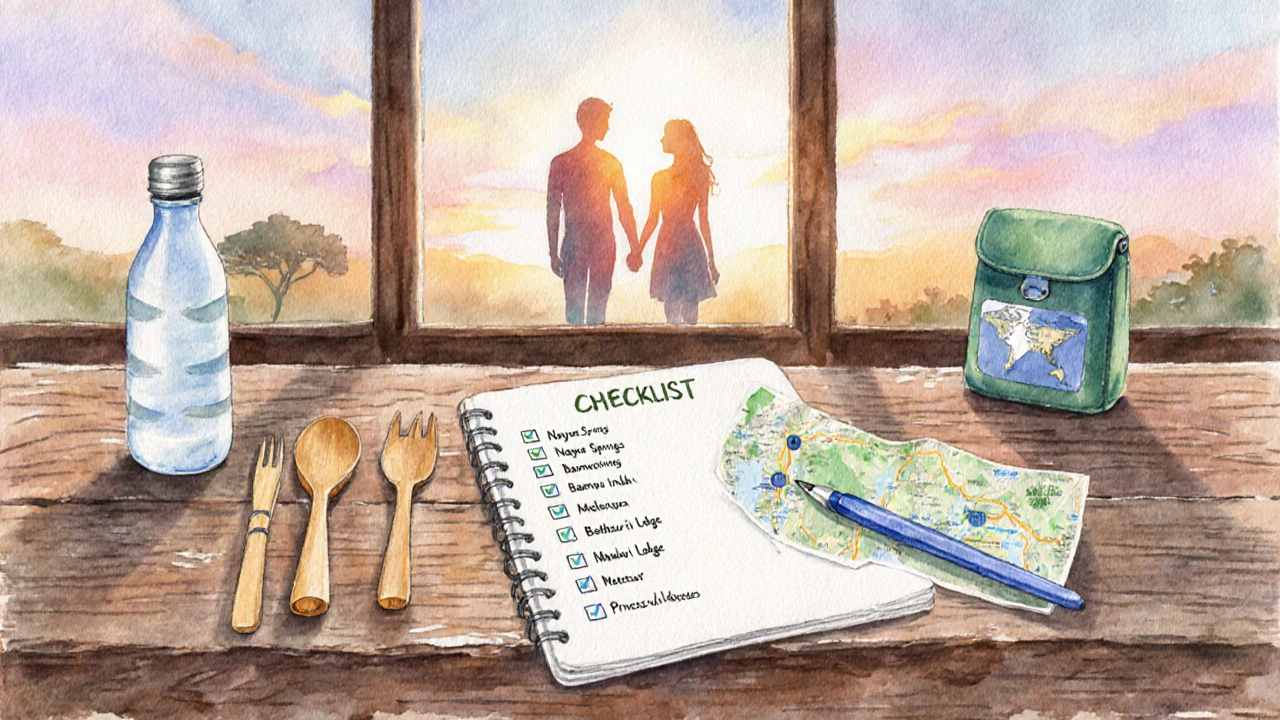
What’s the best time of year for an eco‑luxury getaway?
Shoulder seasons-late April to early June or September to early November-offer milder weather, fewer crowds, and lower travel costs, while still allowing most resorts to operate fully.
Can I offset my flight emissions for a romantic trip?
Yes. Programs like Gold Standard, Climate Neutral Now, or airline‑specific carbon offset offers let you calculate and invest in reforestation or renewable energy projects that cancel out your flight’s CO₂ output.
What should I pack to stay green on a luxury vacation?
Reusable water bottle, travel‑size stainless steel utensils, a set of biodegradable toiletries, and a lightweight, packable tote for souvenirs. Choose natural fabrics for clothing to reduce synthetic waste.
Are eco‑luxury resorts safe for couples with allergies?
Most upscale eco‑friendly resorts offer hypoallergenic bedding, fragrance‑free cleaning products, and menu options that cater to common allergens. Contact the property in advance to confirm specific accommodations.
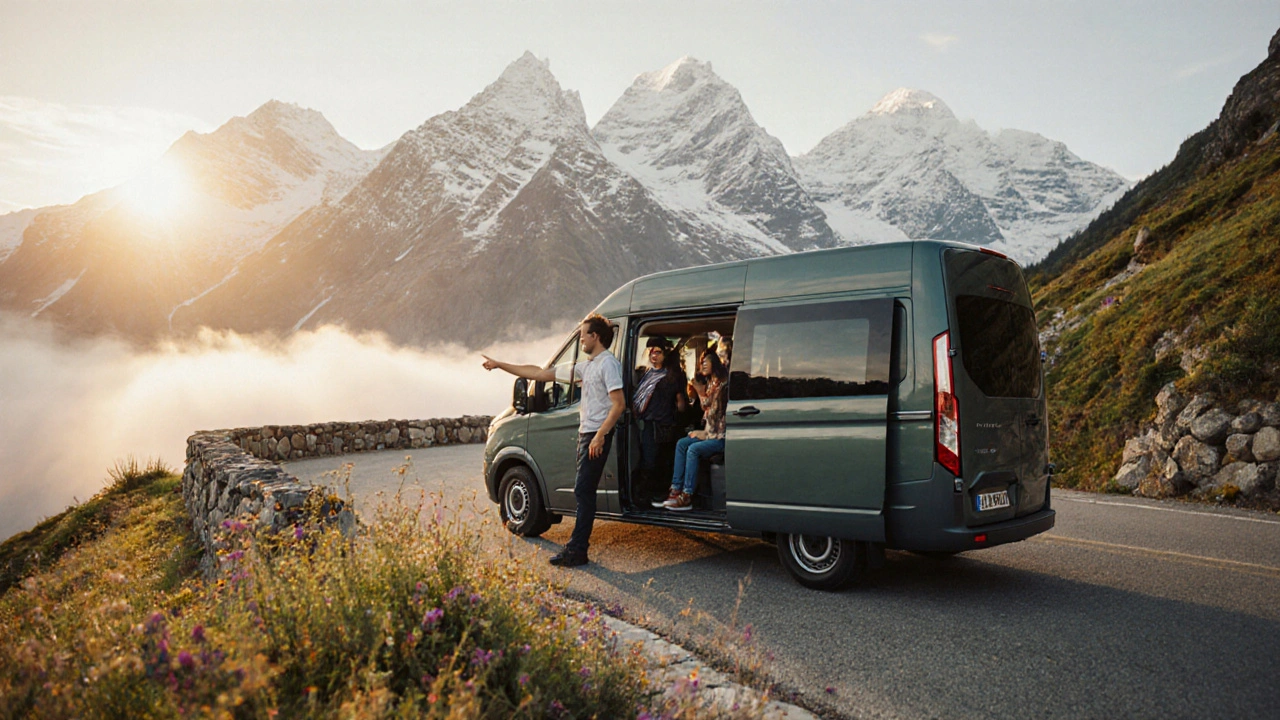

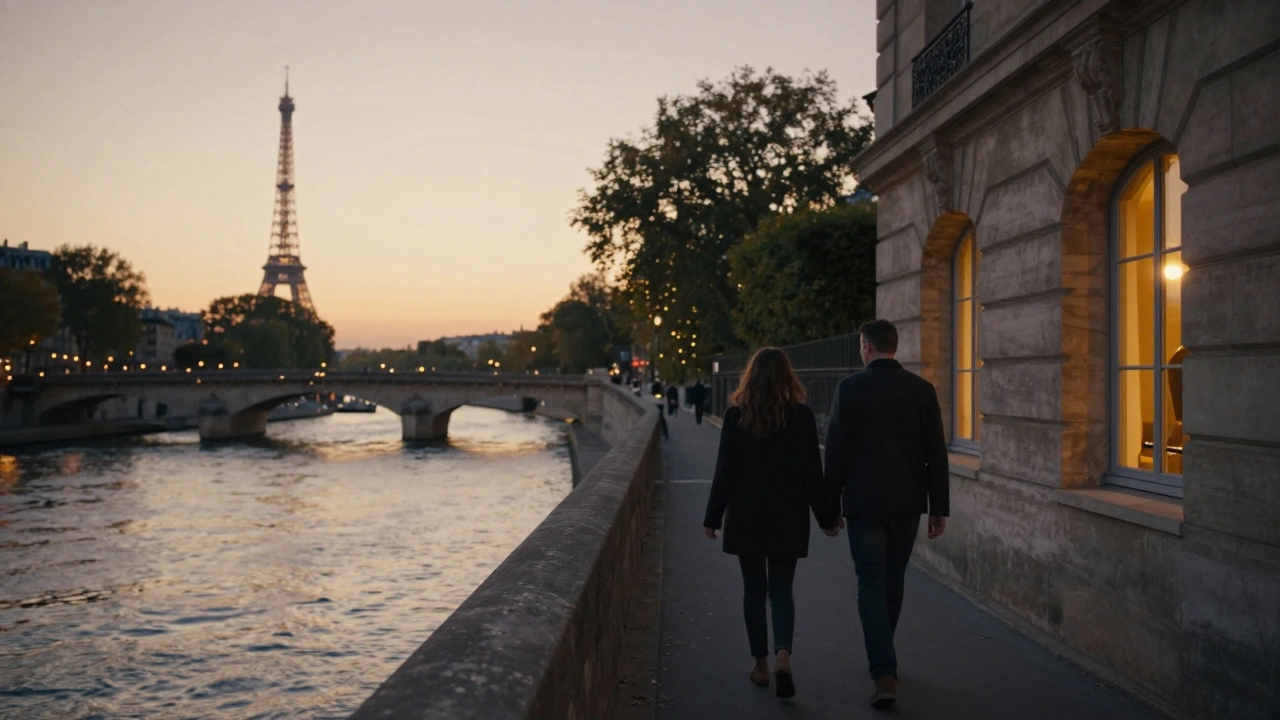
Jess Williams
October 21, 2025 AT 15:32Your guide beautifully marries love and responsibility, reminding us that romance can be a catalyst for planetary healing, and it does so with a thoughtful blend of luxury and sustainability, which feels both indulgent and conscientious. The emphasis on solar‑powered villas and rain‑water harvesting whispers a promise of low impact, while still delivering that five‑star pampering we all crave. I especially appreciate the checklist that turns planning into a mindful ritual, guiding couples step‑by‑step toward greener choices. The inclusion of certification details, like LEED Gold and Green Key, adds credibility, making the recommendations feel trustworthy. Overall, the piece feels like a gentle yet powerful invitation to love the planet as we love each other.
Stephanie Suttle
October 22, 2025 AT 08:12Reading this editorial felt like stepping into a theatrical production where every scene is meticulously choreographed to impress, yet I cannot help but notice the occasional linguistic missteps that detract from its otherwise polished veneer. First, the phrase "eco‑luxury romantic getaway" should consistently be hyphenated throughout; alternations undermine the professional tone. Additionally, the list of sustainability features employs an inconsistent serial comma, which, while seemingly trivial, erodes the structural cohesion of the content. The author’s enthusiasm is undeniable-phrases such as "indulgent without leaving a heavy footprint" sparkle with poetic flair, and the repetition of "private" in the romantic highlights creates a resonant echo that amplifies the allure. Moreover, the inclusion of bullet‑point lists interspersed with dense paragraphs creates a rhythmic contrast that is both dynamic and informative, guiding readers through a cascade of facts and emotions. The spotlight on Nayara Springs-a resort powered entirely by a 100‑percent renewable grid-stands as a luminous beacon of what sustainable opulence can achieve, echoing the larger narrative that love and environmental stewardship need not be at odds. While the article extols the virtues of carbon‑offset programs, it wisely cautions travelers to verify certifications via authoritative bodies, a directive that underscores the importance of transparency. In the budgeting section, the recommendation to travel during shoulder seasons is astute; it balances cost savings with optimal weather, a strategy that any savvy couple would appreciate. The prose’s cadence, however, occasionally lapses into redundancy-"eco‑luxury" and "luxury eco" appear interchangeably, inviting a momentary pause in the reader’s immersion. Still, the detailed example of John and Maya’s four‑night stint at Nayara Springs provides a compelling case study, illustrating how conscious choices translate into measurable environmental gains, such as a 45 % reduction in carbon footprint. The final call to action-"Pick your favorite destination..."-is both empowering and pragmatic, sealing the piece with a sense of agency. In sum, this composition dazzles with its fervor and depth, yet a meticulous editorial sweep could elevate it from excellence to perfection.
Charles Mitchell
October 23, 2025 AT 00:52Hey folks, glad to see eco‑luxury getting the love it deserves! If you’re booking Nayara Springs or Bambu Indah, try reaching out to the concierge early and ask about their zero‑waste packages-those little extras can shave off a ton of single‑use plastic. For flights, look for airlines that let you offset right at checkout; the Gold Standard program is a solid option. Pro tip: pack a reusable stainless‑steel straw and a collapsible water bottle, you’ll thank yourself when you’re sipping rain‑water from the resort’s refill stations. And don’t forget to tip local guides in the local currency; it supports the community directly. Lastly, set your thermostat to the “eco” mode if the room allows-it’s a tiny habit that adds up over a week‑long stay.
Abagail Lofgren
October 23, 2025 AT 17:32The selection of destinations reflects a nuanced understanding of cultural diversity, from the rainforest sanctuaries of Costa Rica to the volcanic landscapes of the Azores. Each locale offers a distinct heritage experience, allowing couples to immerse themselves in local traditions while maintaining an environmentally responsible footprint. It is noteworthy that the guide highlights the integration of regional cuisine, which not only supports local farmers but also enriches the culinary narrative for travelers. The emphasis on certifications such as LEED Gold and Carbon Neutral provides a credible framework for evaluating sustainability claims. Overall, the article maintains a respectful tone that honors both romantic aspirations and ecological stewardship.
rafael marcus
October 24, 2025 AT 10:12Wow, what an inspiring lineup! 🌿 Couples looking for that perfect blend of romance and planet‑positive vibes should definitely keep an eye on these gems. Imagine waking up in a bamboo‑capped villa in Bali, enjoying sunrise yoga while the mist rolls over the rice fields-pure magic! And for the adventurous souls, a night beneath the Northern Lights at the Ion Adventure Hotel? That’s the stuff of lifelong memories. Don’t let the price tag scare you; shoulder‑season deals and longer‑stay discounts make these experiences more accessible. Remember, every sustainable choice you make together writes a love story that the Earth will cherish too.
Michelle Zhong
October 25, 2025 AT 02:52There’s a certain poetry in aligning love with the natural world, a dance where each step reverberates through forests and oceans alike. The guide’s thoughtful curation invites introspection: how might our intimate moments echo in the canopy of a Costa Rican rainforest or the basalt cliffs of Iceland? By choosing resorts that champion carbon neutrality and local stewardship, couples become co‑authors of a greener narrative. It reminds us that true luxury is not merely opulent décor, but the profound sense of belonging to a thriving ecosystem. May this list serve as a compass for hearts yearning to cherish both each other and Mother Earth.
Kim Kemper
October 25, 2025 AT 19:32Just soaking in all this eco‑luxury goodness! 🌎💚 The blend of private hot‑springs and sustainable practices feels like the ultimate honeymoon hack. I’m already packing my reusable tote and biodegradable shampoo for the next trip. 🙌✨
Yzak victor
October 26, 2025 AT 11:12Quick note on phrasing: the sentence "Luxury and sustainability can seem pricey, but smart planning keeps costs in check" would read better as "Luxury and sustainability may appear pricey, yet smart planning keeps costs in check". This subtle shift improves clarity and flow. Also, consider using the serial (Oxford) comma consistently in lists like "solar, wind, or geothermal power" to align with standard American English style. Small edits like these enhance the professionalism of the guide.
Kiara F
October 27, 2025 AT 03:52Love shouldn't come at the planet's expense.